Authors:
ABSTRACT
Aim
The purpose of this paper is to consider evidence for the early involvement of the pulp in primary molars following a
proximal caries attack and to consider the evolution of ferric sulphate as the possible alternative to formocresol for pulp therapy in
primary molars. Concerns have been expressed over the wisdom of using products containing formaldehyde in children and alternatives
should be considered, even though there is no substantive data to support the claims of formocresol toxicity. Pulp therapy is still often
required in the management of large proximal caries in primary molars. General dental practitioners often comment on the futility of
restoring primary teeth with the common perception being that restorations more often than not fail in the primary teeth. One common
cause is abscess formation following proximal restorations. The main reason why this occurs is that proximal restorations in primary
teeth are often carried out without consideration being paid to the state of the pulp. We have shown in a series of studies in Leeds that
pulp inflammation in primary molars precedes its exposure. Most primary molars where caries had involved more than half inter-cuspal
distance manifested pulp inflammation involving the entire pulp horn, but rarely the root canal tissue. This would mean that in most
primary teeth with proximal caries, which are indicated for a pulpotomy, the removal of the coronal pulp alone would render them free of
inflammation. This would then bring into question the use of formocresol on an otherwise uninflammed radicular tissue, which has a
viable blood supply.
Conclusion
Pulp inflammation in primary molars sets in at an early stage of a proximal carious attack. Also, in
most cases, a medicament that would achieve haemostasis, such as ferric sulphate, rather than achieve fixation of the tissues is all that
would be required for the preservation of the primary tooth until exfoliation.
PLUMX METRICS
Publication date:
Keywords:
Issue:
Vol.3 – n.3/2002
Page:
Publisher:
Cite:
Harvard: M. S. Duggal, A. Nooh, A. High (2002) "Response of the primary pulp to inflammation: a review of the Leeds studies and challenges for the future", European Journal of Paediatric Dentistry, 3(3), pp111-114. doi:
Copyright (c) 2021 Ariesdue

This work is licensed under a Creative Commons Attribution-NonCommercial 4.0 International License.
